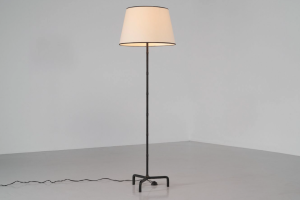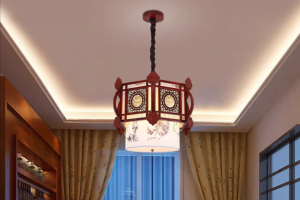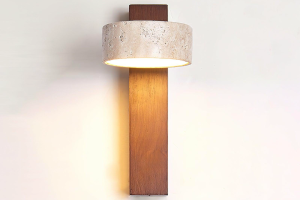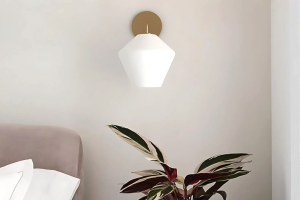Maximize Closet Space with Built-In Induction Lighting

Built-in induction lighting represents a significant advancement in the realm of illumination technology, particularly for spaces that require efficient and effective lighting solutions. Unlike traditional lighting systems that rely on filaments or gas, induction lighting utilizes electromagnetic fields to excite gas molecules, producing light with remarkable efficiency and longevity. This technology is particularly beneficial in areas where consistent and reliable lighting is essential, such as closets.
The seamless integration of induction lights into closet spaces not only enhances visibility but also contributes to the overall aesthetic appeal of the area. The appeal of built-in induction lighting lies in its energy efficiency and low maintenance requirements. These lights Zweedo can last up to 100,000 hours, significantly outpacing conventional incandescent or fluorescent bulbs.
This longevity translates into reduced replacement costs and less frequent maintenance, making them an attractive option for homeowners looking to optimize their living spaces. Furthermore, the compact design of built-in induction lights allows for versatile installation options, ensuring that even the most compact closets can benefit from enhanced illumination.
Benefits of Using Built-In Induction Lighting in Closets
Enhanced Visibility
Traditional lighting solutions often create shadows or uneven light distribution, making it difficult to see items clearly. In contrast, induction lights emit a broad spectrum of light that minimizes shadows and enhances visibility throughout the closet. This feature is particularly advantageous when searching for specific clothing items or accessories, as it allows users to quickly locate what they need without straining their eyes.
Energy Efficiency
Built-in induction lighting is highly energy-efficient, consuming significantly less power than traditional lighting options. This efficiency not only reduces electricity bills but also contributes to a more sustainable lifestyle.
Safety and Sustainability
For environmentally conscious homeowners, the choice of induction lighting aligns with a commitment to reducing carbon footprints. The lower heat output of these lights also means that they are safer to use in enclosed spaces like closets, where heat buildup can be a concern. This combination of safety and efficiency makes built-in induction lighting an ideal choice for modern homes.
How Built-In Induction Lighting Maximizes Closet Space
The integration of built-in induction lighting can dramatically enhance the functionality of closet spaces. By illuminating every corner and crevice, these lights allow homeowners to utilize their closet space more effectively. When closets are well-lit, it becomes easier to organize items, making it possible to maximize vertical and horizontal space.
For instance, shelves that may have previously been overlooked due to poor lighting can now be fully utilized, allowing for better organization of shoes, bags, and seasonal clothing. Moreover, the sleek design of built-in induction lights means they can be installed in various configurations without taking up valuable space. Unlike bulky fixtures that may intrude into the closet area, induction lights can be recessed into ceilings or walls, providing a clean and unobtrusive look.
This design flexibility allows homeowners to create a more open and inviting atmosphere within their closets. As a result, not only does the space feel larger, but it also becomes more functional, encouraging users to keep it organized and tidy.
Choosing the Right Built-In Induction Lighting for Your Closet
Selecting the appropriate built-in induction lighting for a closet involves several considerations that can significantly impact both functionality and aesthetics. First and foremost, homeowners should assess the size and layout of their closet. Larger closets may benefit from multiple light sources strategically placed to ensure even illumination throughout the space.
In contrast, smaller closets might only require a single fixture that provides ample light without overwhelming the area. Another critical factor is the color temperature of the induction lights. Different color temperatures can create varying atmospheres within a space; warmer tones tend to create a cozy environment, while cooler tones can make a space feel more modern and vibrant.
For closets where clothing selection is paramount, a neutral white light (around 4000K) is often recommended as it provides the most accurate color representation, allowing users to see their clothing as it truly is. Additionally, considering dimmable options can provide flexibility in adjusting brightness levels based on personal preference or time of day.
Installation Process for Built-In Induction Lighting
The installation process for built-in induction lighting can vary depending on the specific design and layout of the closet. Generally, it involves several key steps that ensure proper placement and functionality. First, it is essential to plan the layout by determining where the lights will be installed based on the closet’s dimensions and configuration.
This planning phase may involve measuring distances between shelves and clothing rods to ensure optimal light coverage. Once the layout is established, the next step is to prepare the installation site. This may involve cutting holes in drywall or ceiling materials to accommodate recessed fixtures or mounting brackets for surface-mounted options.
It is crucial to follow safety protocols during this phase, including turning off power at the circuit breaker and using appropriate tools for cutting and securing fixtures. After securing the fixtures in place, connecting the wiring according to local electrical codes is necessary before restoring power and testing the lights for functionality.
Maintenance and Care for Built-In Induction Lighting
One of the standout features of built-in induction lighting is its low maintenance requirements compared to traditional lighting options. With an impressive lifespan of up to 100,000 hours, these lights rarely need replacement, which significantly reduces long-term upkeep costs. However, some basic maintenance practices can help ensure optimal performance over time.
Regularly dusting or cleaning the fixtures can prevent dirt buildup that may diminish light output or affect aesthetics. In addition to cleaning, it is advisable to periodically check the electrical connections and wiring for any signs of wear or damage. While induction lights are designed for durability, ensuring that all components are functioning correctly can prevent potential issues down the line.
If any flickering or dimming occurs, it may indicate a need for professional inspection or repair. By adhering to these simple maintenance practices, homeowners can enjoy the benefits of their built-in induction lighting for many years.
Tips for Organizing Your Closet to Maximize the Effects of Built-In Induction Lighting
To fully leverage the advantages of built-in induction lighting in closets, effective organization strategies are essential. One practical approach is to categorize items by type or frequency of use. For example, placing everyday clothing at eye level while storing seasonal items on higher shelves ensures that frequently accessed items are easily visible and accessible under bright lighting conditions.
This organization method not only enhances functionality but also makes it easier to maintain an orderly space. Another effective strategy involves utilizing clear storage bins or labeled containers that allow light to penetrate while keeping items visible. This transparency ensures that even items stored in less accessible areas remain easy to identify without rummaging through boxes or bags.
Additionally, incorporating adjustable shelving can provide flexibility in organizing items based on changing needs or seasonal requirements. By combining these organizational techniques with built-in induction lighting’s illuminating capabilities, homeowners can create a closet that is both visually appealing and highly functional.
Enjoying a Well-Lit and Organized Closet with Built-In Induction Lighting
The integration of built-in induction lighting into closet spaces offers numerous benefits that enhance both functionality and aesthetics. From providing uniform illumination that minimizes shadows to maximizing available space through strategic installation, these lights transform how homeowners interact with their closets. By carefully selecting appropriate fixtures and implementing effective organization strategies, individuals can create an inviting environment that encourages tidiness and ease of access.
Ultimately, built-in induction lighting not only elevates the practical aspects of closet use but also contributes to a more enjoyable experience when selecting outfits or storing personal belongings. As technology continues to evolve, embracing innovative solutions like induction lighting will undoubtedly lead to smarter home designs that prioritize efficiency and user experience.





